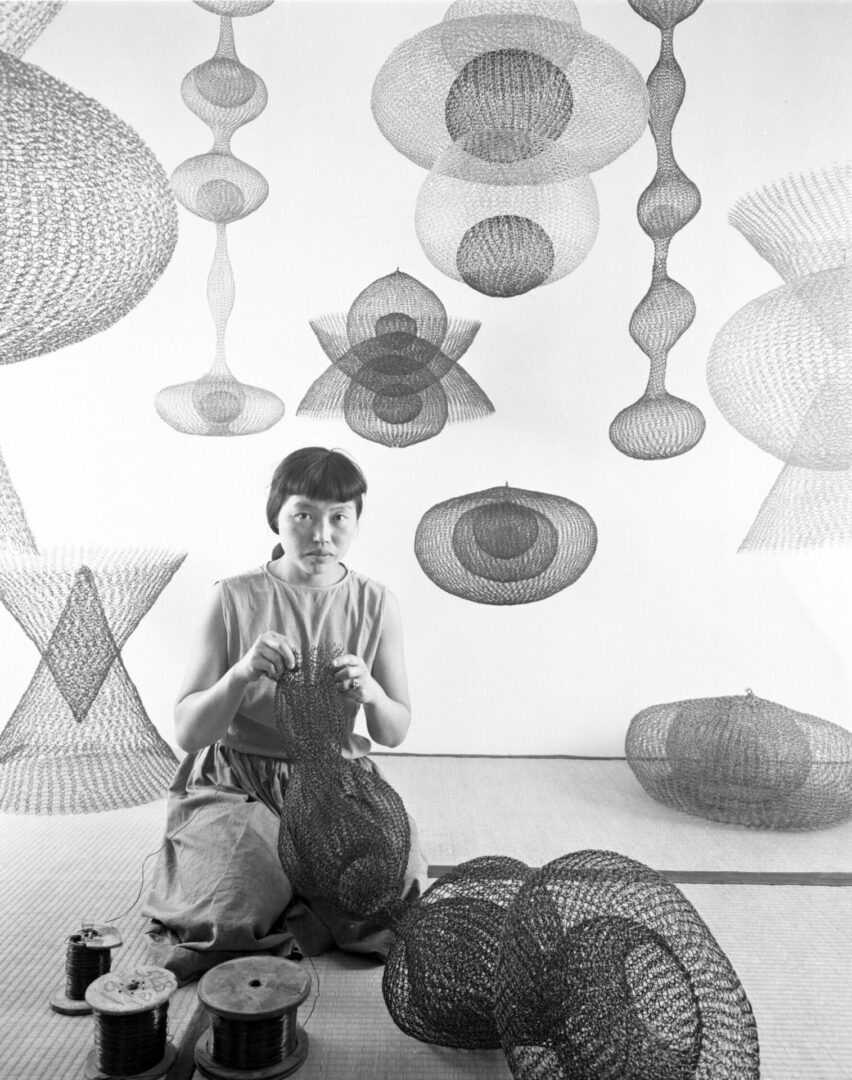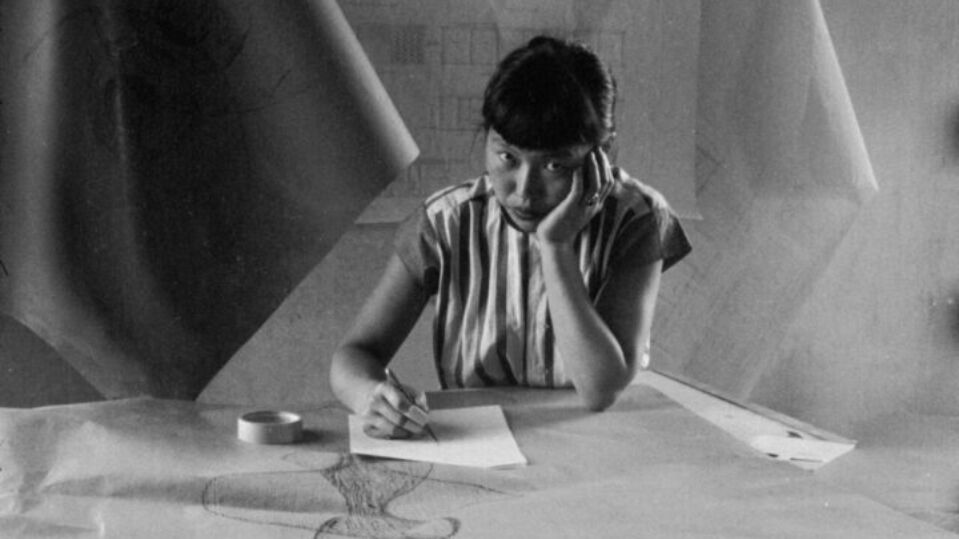“An artist is not special. An artist is an ordinary person who can take ordinary things and make them special.” These are the words of Ruth Asawa (1926-2013), the American modernist artist and advocate best-known for her signature hanging looped-wire sculptures. A major new retrospective at The San Francisco Museum of Modern Art opens on 5 April, featuring the entire spectrum of the artist’s practice: sculptures, drawings, prints, paintings, designs and archival materials. It presents her expansive body of work in a loosely chronological arc, positioning them within the unfolding narrative of her life and career.
Asawa’s story is one of creativity against the odds. She was born in rural California and grew up on a farm as the fourth of seven children. However, in 1942, a 15-year-old Asawa and her family were unjustly displaced to incarceration camps, along with many other people of Japanese descent, in the wake of Executive Order 9066. After the end of World War II, Asawa enrolled in the experimental Black Mountain College near Asheville, North Carolina. With the encouragement of Black Mountain College teachers including Josef Albers, Buckminster Fuller and Max Dehn, Asawa flourished, creating drawings with undulating lines, repeating patterns and studies of positive and negative space that would resonate in later work. In 1949, Asawa moved from North Carolina to San Francisco – the city she would call home for the rest of her life – and exhibited at SFMOMA (then the San Francisco Museum of Art) for the first time.
The exhibition spans over 14,000 square feet, incorporating several thematic displays. The opening gallery focuses on Asawa’s studies at Black Mountain College from 1946 to 1949. Another section highlights her work in the 1950s in San Francisco, where she developed her signature looped-wire style. There are also designs for commercial projects, such as fabric patterns and wallpaper, alongside a space dedicated to nature, examining her deep connection with the organic world across both two and three dimensions.

A key segment of the show is dedicated to Asawa’s Noe Valley house and studio, which was the centre of her creative and family life for more than half a century. This section features a collection of wire sculptures in various forms and sizes, many of which Asawa hung from the rafters in her living room. It’s an intimate encounter with works that surrounded the artist every day, and a chance to get up-close with the handcrafted, organic-inspired forms for which Asawa is renowned. Her method, mathematical in its precision, was inspired by a basket crocheting technique she learned in 1947 during a trip to Mexico. At SFMOMA, audiences will experience this on both small and large scales: a dozen of her tiniest wire sculptures are included, the smallest measuring just over one inch in diameter.
Another focus is on Asawa’s unwavering commitment to arts advocacy. She was passionate about creative education and providing opportunities for young people. In the 1960s, the artist played a key role in establishing the Alvarado School Arts Workshop in San Francisco – one of her earliest initiatives to integrate the arts into school classrooms. This programme became a model for education nationwide.
Similarly, Asawa was a strong advocate for public sculpture, believing that “Art is for everyone. It is not something that you should have to go to the museums in order to see and enjoy.” The SFMOMA retrospective highlights some of Asawa’s most notable public art projects, including the mermaid fountain at San Francisco’s Ghirardelli Square, through video, photographs, maquettes, and archival materials.
This exhibition is the first major international museum retrospective of Asawa, and it feels long overdue. As Janet Bishop, Thomas Weisel Family Chief Curator and Curator of Painting and Sculpture, SFMOMA, says: “Not only was Asawa an exceptionally talented artist – among the most distinguished sculptors of the 20th century and a major contributor in so many other mediums – but she lived her values in everything she did, modelling the importance of the arts and opening up creative opportunities for others at every turn.”
Ruth Asawa: Retrospective is at SFMOMA until 2 September.
Image Credits:
1. Portrait of Japanese American artist sculptor Ruth Asawa as she sketches a design, 1954;image: Nat Farbman/The LIFE Picture Collection/Shutterstock; artwork: © 2025 RuthAsawa Lanier, Inc. / Artists Rights Society (ARS), New York, courtesy David Zwirner
2. Artist Ruth Asawa making wire sculptures, California, United States, November 1954;image: Nat Farbman/The LIFE Picture Collection/Shutterstock; artwork: © 2025 RuthAsawa Lanier, Inc. / Artists Rights Society (ARS), New York, courtesy David Zwirner




